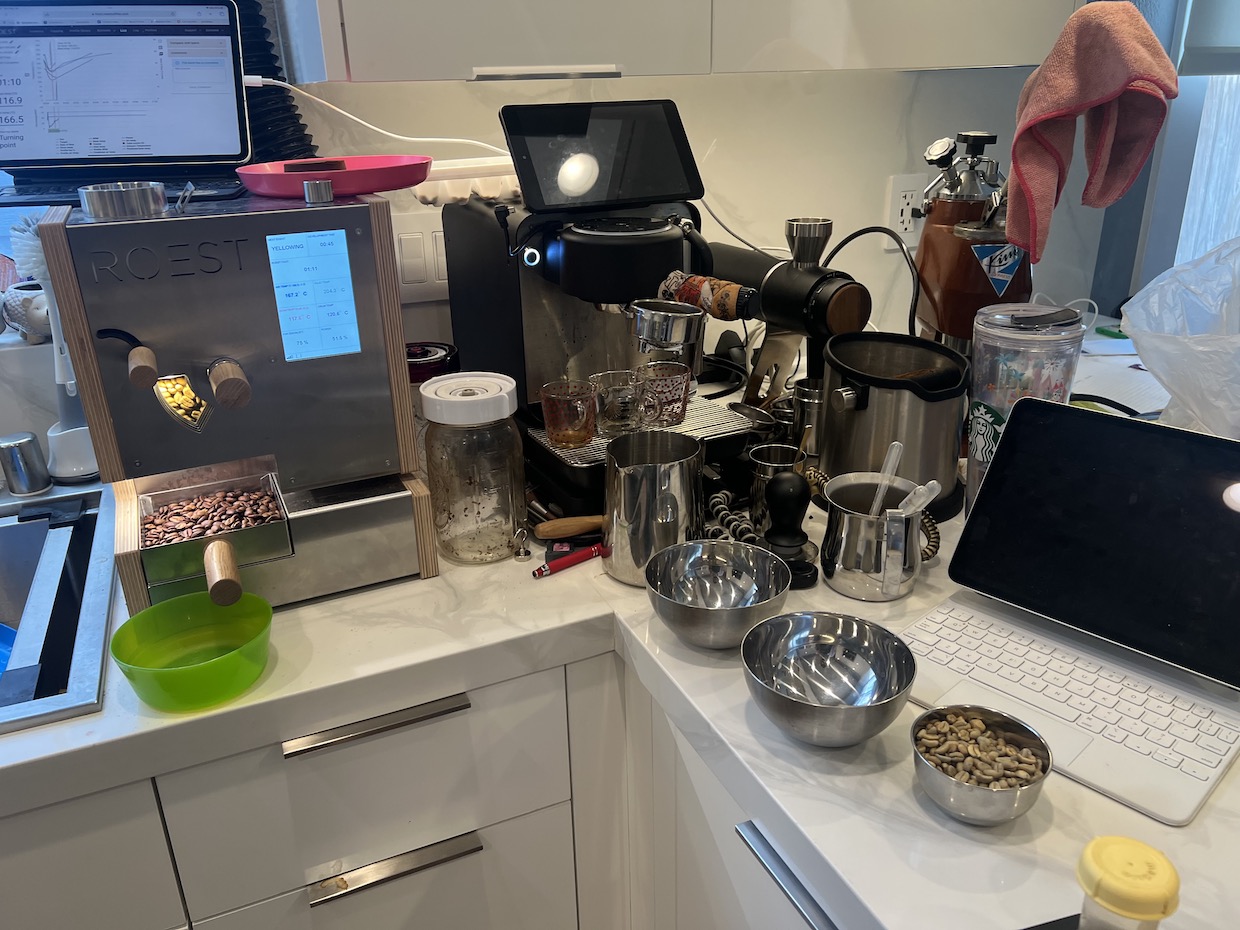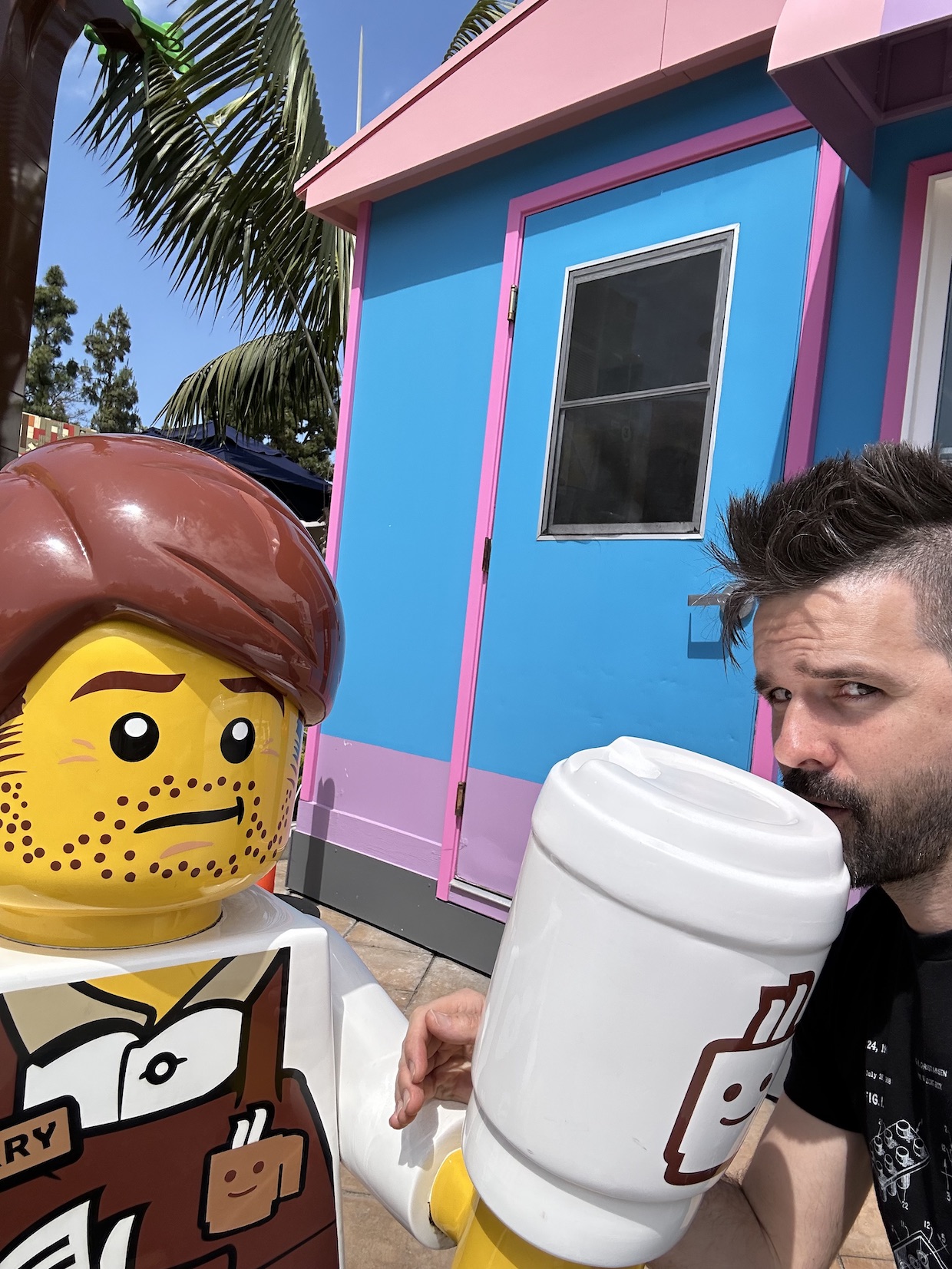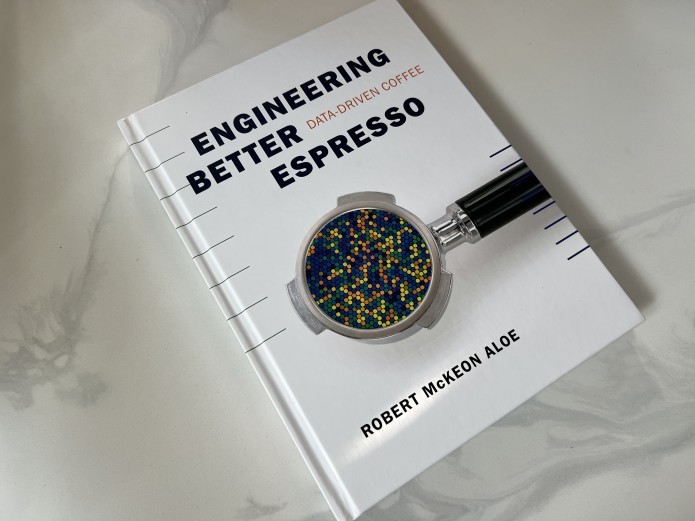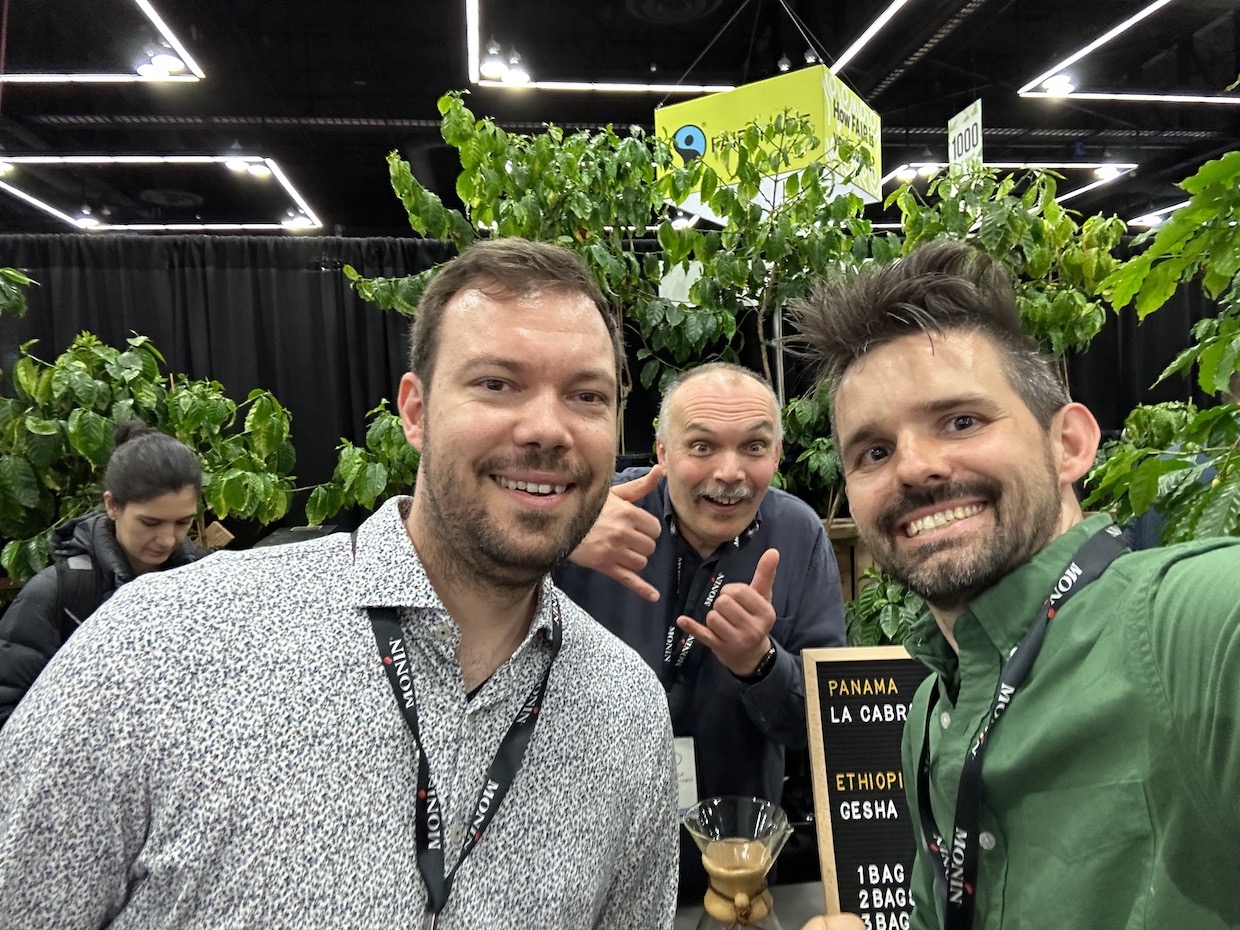
The home coffee lab of Robert McKeon Aloe, author of the book “Engineering Better Espresso.” All images courtesy of Robert McKeon Aloe.
For some science-minded people, espresso can be a never-ending trip down the rabbit hole, where aspects like fines migration, flow rates, TDS, extraction yield and water chemistry beg far more questions than answers.
One of those people is Robert McKeon Aloe, author of the new book Engineering Better Espresso: Data Driven Coffee. Although not a professional barista, Aloe has posted hundreds of journal-style scientific articles over the past five years, mostly on Medium, examining nearly every variable at play in pulling a shot.
Many of those writings based on Aloe’s experimentation have helped form the new book, which spans 163 pages over 26 chapters and four core categories: Pre Shot; Shot Preparation; Pulling the Shot; and Post Shot.
Aloe’s goal in publishing his experiments is to reach consumers, as well as coffee professionals, who believe that more expensive, higher-tech equipment is the only route to better shots. A theme of the book is that while better equipment can help make better espresso, an understanding of the variables will help even more.
“This book is not for a brand new beginner. It is for someone who has gotten some good knowledge, but wants to see where they could improve,” Aloe recently told DCN. “I think it is also for more advanced baristas who want to experiment and think outside of the methods that have worked well for them.”
With a Ph.D in Computer Science and Engineering from the University of Notre Dame, Aloe spends most of the daylight hours working as a data scientist for a well-known technology company, designing experiments, developing algorithms and conducting failure analysis.
If ever a line existed between Aloe’s “coffee for pleasure” and “coffee for research,” it has eroded over the years as he has tested hypotheses on topics ranging from the behaviors of coffees at different roast levels, espresso basket design, grinder performance, puck preparation and much more.
“Coffee for research is so entangled in my ritual that it has been tough to not collect data on one or two shots,” Aloe recently told DCN. “I also think I get a little sloppy when I don’t collect data, but I have tried to be data-free when making my wife coffee, or making a morning latte. I derive so much pleasure from the data and experiments, and I’m collecting data from a few shots of espresso a day. Most of my experiments are longitudinal in that sense.”
Beyond the book, Aloe’s posts have continued on to topics such as the effects of extract cooling, new filter basket designs and what he calls “thermal preinfusion” — i.e. allowing a few minutes for dry coffee in a portafilter to absorb the heat of the portafilter prior to extraction.
Daily Coffee News recently reached out to Aloe to learn more about Engineering Better Espresso and what’s next for the espresso engineer.
How much of the information in Engineering Better Espresso is practicable in a commercial cafe setting?
Most of the book is useful in a cafe, and I think the best part of the book is encouraging people to experiment and learn more about what works best for them.
What have you been up in the time since finishing the book?
I’m working on another book. I have learned so much since writing the first book that I’ve written most of the material for the next espresso book using data science. This new book will do a deep dive on a few key areas for espresso, many of which I’ve written about in the past few years. However, the book will pull many of these threads together to give a bigger picture maximizing espresso extraction. My aim is to start pre-orders by the end of the year.
Where do you see the most coffee-improvement promise among new tools/equipment right now?… Are vibration tampers such as the Nurri VDT and the upcoming Tamped On Squid the future? Variable pre-breakers? Designer espresso baskets?
Cheaper refractometers are the best new tool. DiFluid’s R2 is so accurate and fast, but it is so much more affordable. I think this tool gives home baristas and professionals a greatly improved user experience. Along with the newer scales, I think data science in coffee is ready to take off.
All these other tools are great and interesting, but espresso has so many conflated variables that until one has a great mastery, most of these tools won’t be as impactful as simply applying data.
Three Questions With Robert McKeon Aloe
What about coffee excites you most?
Coffee is like a neural network: We have an input of coffee plants — do a lot of processing steps in different ways until we have an output coffee beverage — but it is challenging to know how the intermediate layers affect the final cup. While there is a lot of learning, coffee is still so mysterious, especially espresso.
What about coffee troubles you most?
So much of the coffee industry has been very private about data and research. Even more recent equipment producers prefer a bit of hand waviness over harder data. This isn’t a new problem, but having a more open community would benefit more people hopefully in an equitable way. That’s why my blog has not been behind a paywall.
What would you be doing if it weren’t for coffee?
I would be a lost soul wandering the earth.
Is there someone in the coffee industry who inspires you? Nominate them for a “Three Questions” feature here.
Howard Bryman
Howard Bryman is the associate editor of Daily Coffee News by Roast Magazine. He is based in Portland, Oregon.
Comment
2 Comments
Comments are closed.









Very good
Hi – I’m Steve and I’m a recovering Coffee Geek and crack addict (2nd crack, but just barely) 🙂
While I appreciate the author’s research, remember it’s just data until it is consistently reproduced by others. And the elephant in the roastery is that coffee is incredibly variable – it is an organic product, often shipped thousands of miles in differing conditions, roasted by a variety of techniques and prepared in many methods by millions of individuals. Each year’s crop would be different even if every other variable could be maintained.
So while trying to bring some order to coffee prep is laudable, it’s probably also pointless. Yet so many spend thousands on bells and whistle machines and 10th wave water, etc. Yet they don’t control even the roast, so what’s the point?
Coffee Snobs – that’s the point, I suspect